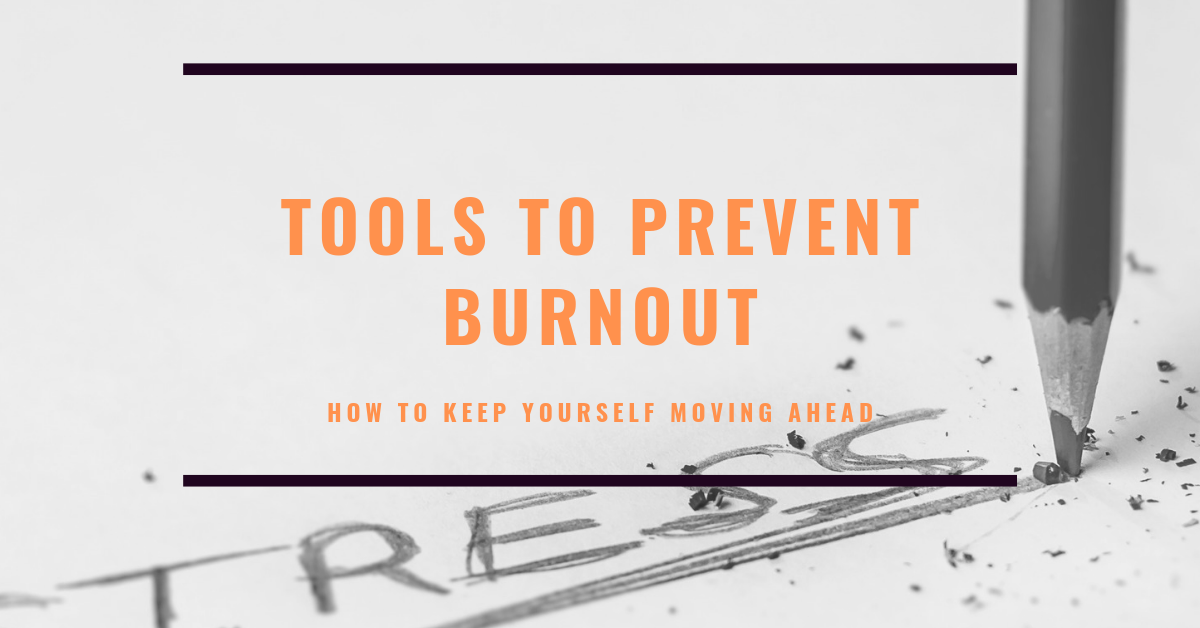|
To deduct or not deduct: The top write offs as a small business owner
Business expenses can be a major help when it comes to tax time. Becoming more familiar with what a “write off” is defined by, you can then identify what would be the top write off you can claim on your own business taxes. While the write offs may differ based on the structure of your business, most are similar in nature. Let’s take a look at the top write offs, you as a small business owner can look to capitalize from. What’s a Deduction? First, it’s important to define a deduction. In order for an expense to be deductible, the company must use it as an ordinary and necessary item. For instance an ordinary item is something usually used in the trade. Carpenters using hammers and nails is common- using low profile rims and custom leather seats for a Ferrari may not count. A necessary expense is one that helps your business. This can be an upgrade to software, a computer or even a tablet if you accept payment in the field. When starting out, it’s best to separate your expenses from personal. In addition, separating business expenses from certain “business operations/transaction” costs is key as well. The following expenses are used to figure out a company's “cost of goods”:
In addition, there are types of expenses that go into figuring the cost of “goods sold” which include the cost of products or raw materials, including freight, storage, labor costs (including contributions to pensions or annuity plans), and facility overhead. While deductions are one thing, Capital Expenses are another “write off” must follow. In this case, businesses must capitalize, rather than deduct, some of their costs. These costs are a part of the investment into the business which is why they are called capital expenses. Capital expenses are considered “assets” not deductions. Some types of costs associated with capital expenses include:
Generally speaking you can not deduct personal expenses such as living space or family expenses unless it’s tied to the business. For instance, if you use your home office for business purposes you can deduct that portion on your taxes. Some of the most common business write offs for the small business owner:
Filing your claims Knowing what constitutes a deduction and what is considered a legit “write off”, it all needs to be filed at tax time. There are some ways in which business taxes are reported and vary based on the business structure and setup. If you are looking for more ways to maximize on your tax breaks, want to learn more about how to plan for tax time, or have general accounting questions we are here to help. Please visit us HERE to chat with us today and see how we can help you get the most out of your businesses deductions.
3 Comments
10 Quick Tips for Blogging for your Business
One tried and true way for a small business (or any size business for that matter) to engage with their customers and members is to develop a blog. Blog popularity is an ever growing medium to engage with, educate, and provide real life examples of how to navigate a variety of topics. Often it’s not a question of “should I blog?”, rather it’s a question of what and how do I go about pushing out content? Well, you’re in luck because we drafted this quick tips list for blogging success. Here are the following tips:
2. Offer a free download People love free stuff. Often overlooked, but a blog post can offer a reader some free downloadable content that brings value to their interests. You can post a quick guide or even a how to get started guide for a topic that your readers want to learn about. 3. Make it intentional Blogging should be fun but also intentional. Keep focus on what message you want to get across and be intentional. If it’s starting to turn into a hot summer, why not write about ways to stay safe in the heat or how to weather the “storm.”- pun intended. 4. Contract out Sometimes it’s ok to hand over the blogging reigns to a professional writer. They can bring a value to the blog with their own perspectives and creativity that pairs well with your brand. In addition they can handle the content while you handle other aspects of your company. 5. Create a map plan Map out your posts so it doesn’t feel like your writing the same content over and over. Look ahead to the type of season your business is heading into and write topics geared towards that plan. If it’s a specific time of year make sure to focus on tips or ideas that help a reader in that moment and also create content for later to post down the road. 6. Solve a problem Why do you read a blog post? It’s not because you feel less educated after! It’s because you have a problem you want solved. So- solve your readers problems and create value to your writing. If you need ideas simply write a blog post to solicit feedback and see what happens! 7. Provide links to valuable sites Backlinking is critical to blog writing. You want users to be able to access the information you are sharing and also direct them to a valuable find. In addition other websites will see you referring to them and may return the favor. 8. Share relevant content Staying relevant is key. If your blogging about one day having solar powered homes you may be a bit outdated. Post and share trends, new findings, or even odd methods that still are relevant today. All in all you want to remain relevant or your readers will find another blog to read. 9. Post often Posting often is important so you have fresh content and keep readers coming back for more. If you can maintain a consistent schedule of posting then you can keep readers expecting content and seeking it out from your site. This also helps keep fresh content for search engines to show the world who you are. 10. Have fun Lastly, and most important is to have fun. Blogging is fun and if you find joy, exciting topics, and relevant information the writing will jump off the page. Enjoy this platform and share some great things with your readers. Enjoy it! Well, there you have it: 10 quick tips for blogging for your business. It’s an easy yet effective way to engage customers, increase brand awareness, and seek out new and exciting opportunities. Until our next post, happy reading! Writing a Business Plan? Top Tips for Business Plan Writing
Writing a business plan entails several key elements and components to ensure the plan reaches the intended goals you have set for your business. Developing a business plan takes some consideration and thought, to ensure the information is not only compelling, but also worthy of a potential investors time and consideration. In this post we will cover a few tips to help you write a business plan to increase the chance the plan is well received by your potential investor. Let’s now take a look at these key tips: Study your competition The idea that your idea is completely unique or original is becoming more and more rare. Today there are more and more businesses who offer a similar set of services to a similar set of clients or customers- and that’s a good thing. When writing a business plan, it’s important to study your competition. Identify how they do what they do, who they target, what’s their angle, who is their demographic, etc. By understanding the competition you can identity how you can benefit from entering into that space and also how to set your idea apart. In terms of business plan writing, completion is a good thing: it means others are seeing the value in the idea too! Know your audience When drafting your business plan you always want to put yourself in the perspective of the person who will be reading your plan. It’s important to study and know your audience. It’s OK to adjust your business plan based on who you’re pitching it to. A wise idea is to always consider creating a fictitious person who would be potentially reviewing your plan speak and your plan as if you were speaking to them. How would they read what you said? How would they interpret what you meant to say? Does everything come across in an ideal and clear concise way for that one individual person understand? If you can create a fictional character that may be reading your plan and write to that person then you were on track to targeting your specific audience. Support your claims If you are going to report it: make sure you can claim it. No, we are not talking taxes, we are talking the claims made in your plan. If you plan on making a claim that you will reach 1000 new customers a year, or you will make x number of new business contracts by mid-year, make sure you can support the claim. It’s best to start out more general and then work your plan down to specific claims that based on trends, numbers, and yes some positive thinking. Once you found what claims you feel you can support (no not 100% sure WILL happen), then list those claims out and stand behind them with confidence. Don’t inflate projections One thing to avoid any business plan is inflating numbers that don’t exist. If you’re going to claim something in your plan make sure you can support it. For example, reporting that you will make $1 million dollars selling bike tires the first year of business, may raise some questions. Now take the same concept and report that in the next year you plan on moving 100 tires a month, at $12 a tire, for an anticipated profit of $1200 a month- that’s a claim that is more conservative than overinflated. You won’t know for sure how the market will respond to your projections, but ground them in some realistic ideas of what can be accomplished with the help of the person your plan is being pitched to. Identify needed resources Businesses need resources. This includes startup costs, personnel, tangible items such as computers, equipment, and other things that will make the business run smoothly. These need to be factored into your business plan as part of your overall cost that you are asking for support in funding. A business plan is not just asking for dollars- it’s asking for the support in resources to get the plan off the ground. When initiating a plan, outline what you will need and what long term upkeep may need to go into those resources. It’s best to map the full picture out and not leave the long term details off the plan. Be logical Ok this one may seem obvious but we have to say it: be logical with your plan. If you are selling goods online as your sole source of revenue, avoid claiming your store will make x sales from foot traffic. If you plan on launching a web platform, ensure your google ranking can actually be “number one” within a matter of a week (this is nearly impossible by the way). In short, report logical, well thought out ideas and dreams so others can buy in on the dream too. If it’s too off base you will lose potential investors faster than you started. Identify your team Plans take people to execute so don’t leave your team off the plan. When pitching your plan on paper, include the team and their specific talents that they bring to the vision of the business. Include who they are, what their role is, and what their background has been to justify that role. By sharing the team, investors are more likely to trust that the aspects of the business will be managed on all fronts. If you don’t have a wide range of talent on the plan, include what you have and how you will make the roles otherwise filled by other work. KISS method We have all heard of KISS right? Not the band, but the philosophy of keeping it super simple. Plans can follow the same. Long winded, overly complex plans usually come of as confusing to the reader and drowns out the actual content you want to be absorbed. Don’t add fluff, and stay concise. Business plan writing is quite the task. It can be embraced and executed well, and with a clear vision on what steps to take in beaking down the process, can streamline the experience. While very business and plan will be different, following some similar tips and guidelines can help you focus in on what sections matter most and what aspects your plan can go without. Best of luck on the planning and get after it! Feeling the burn? Top 5 Tips to Prevent Burnout as a Business Owner
Small business owners everywhere share a lot of the same experiences when it comes to running and managing a business. Often times it can feel like the weight of the world is on their shoulders. This feeling makes a lot of sense as many know it is not easy running a business. Multiple hats are worn and problems have to be solved. But before you can solve everything else you first need to solve this one thing: burnout. From stress to stress about stress, many things can pull your attention away from the tasks and the reasons you got into business in the first place. No matter the business you got into, there is much to be said about managing stress and reducing the pressure of burnout. In this post we will cover the 5 tips you can implement to help curve your burnout. Let’s get started! 5. Exercise Not an athletic person? No need to be when it comes to doing a few things here and there to help decrease stress-exercise being one of them. By engaging in just a few minutes per day, you can implement a exercise routine in no time. Exercise has been shown to reduce stress, increase heart health, and gives your body an activity to exert some pent up stress. Simply taking a walk, doing a 5 minute routine at the start of your day, or hitting the gym for a dedicated work-out session can all help reduce stress and clear your mind. 4. Take a “one day at a time” perspective Ok this is not what you might be thinking. Businesses often take a “where are we going” or a “what does the future look like” approach- which is all good. What we mean here is to take a one day at a time approach to tackling an aspect of the business. For instance, if you layout what needs to be done in the week to meet a goal, break it down to a task or sets of tasks a day. If you can execute a task each day, by taking on no more or no less, you breakdown the workload to a more manageable view. One day of accomplishing tasks added up equates to a full week of being productive and ahead of the curve. 3. Take unwind time Notice how we didn’t say “you” time? It’s for a reason- unwind time is actually time to unwind, not focus on other things. When people take “me” (or you time), they often do things that add more stress. The pressure to capitalize on the the time you a lot adds less than perfect outcomes. So, instead of focusing on “you”, focus on doing something that helps you unwind. Reframing the time as unwind time, sort of gives you permission to do something different. It forces you to focus on decompressing and not so much on maximizing your time. Read a book, go on a walk, binge a funny show, or write a silly story that you throw away at the end. Something that takes your mind off the business and on something that is freeing. 2. Delegate A lot of business owners have trouble handing over tasks to others. Many people in fact have a case of the “I've got its.” It’s key to find people in the business, or life, that you can delegate tasks to. If other people around you can email out the newsletter, can follow up after a service was performed, or can sign work orders- let them do it! People will feel more empowered, you will feel less pull in multiple directions, and overall burnout may subside. Go ahead-delegate a little. 1. Learn the art of “no” One of the most critical lessons we all learn is the ability, and freedom, to say “no.” For some, saying no is like hurting someone or something you love. Saying no does not have to feel this way-nor should it. Saying no is the ability to recognize what you can or can not commit to and feeling empowered to be true to that. By saying no to projects, deadlines, or duties, you can feel more empowered when you do say yes. If things are not right, saying no can help you reshift focus and find what areas you can commit to and how to meet those expectations. So, try saying it aloud: No! Burnout is a real thing. It can sneak up on you, fill your mind, and eventually take you out of your game. Or, it can be something you embrace and find ways to minimize its impacts on your or your business. By following some simple tips, you can give burnout the cold shoulder and move through the ups and downs of business like a pro. So, go ahead and give yourself permission to blow-off burn-out! Have a side hustle? How to handle taxes as a Freelancer in the Gig Economy
Freelancing, or in newly coined terms “Gig Economy” has taken the US by storm. In fact, the U.S. Bureau of Labor Statistics published a report stating that 16.5 million people now make up the gig economics and approximately 59% of U.S. companies are now using remote workers and freelancers. Some predictions indicate that by 2020, over 40% of American workers would become independent contractors. It’s not surprising why the gig economy or freelancing has become such a trend. With flexible work schedules, variety in projects, demand for skilled contractors, and more mobility with technology, freelancing is taking over the workforce. With such a major shift in the ways in which Americans earn their income, much has been asked about how to manage reporting, filing, and preparing for taxes. As more people get away from employer issued W2’s and more responsibly for tracking expenses and revenue become the task of the Freelancer. The more a freelancer works and begins bumping up the income from their side hustle, the more important it is to understand how to handle their taxes. Freelancer Tax Basics: For any freelancer or side hustler who makes $400 or more in any given year, they are expected to cover their self-employment taxes of 15.3% on that earned income. This covers your Medicare and Social Security taxes. The IRS views you responsible for this because in that situation you are both the employee and the employer. If freelancing is a side hustle, and you receive pay stubs from an employer, they typically are covering those costs through your withholdings in the year. You can utilize a Schedule SE tax form to help calculate your self-employment tax, which then gets reported on your standard Form 1040. What should you save? Because the self-employment tax that gets assessed (15.3%) is in addition to your regular income tax rate, it’s advised to set aside at least 25% up to around 35-40% to be extra safe. It may seem like a lot considering it’s close to have of any earned income, but you need to cover both taxes throughout the year. In addition, since taxes from the freelance work are not being withheld throughout the year, you may need to estimate taxes for the upcoming year and pay the IRS quarterly (typically every three months). A general rule to follow:
If you make $2000 or less each year in freelance income, you can probably skip estimated tax payments and report your freelance income when you file your yearly tax return. Tracking your Income In most cases you will receive a 1099-MISC form from each client once you hit the $600 mark if earned income from that contract/gig. In some cases, you will not be given the 1099-MISC, rather you may receive a 1099-K instead. One kicker: clients are not mandated to send the 1099-K unless you earn more than $20,000 or more than 200 “payments” to you. It’s important to note that not ALL contracts will issue the 1099. Programs like UpWork for example, do not issue out 1099, rather you are issued a summary of earnings. At the end of the day, it is you sole responsibility to track income earned from contracts throughout the year. While this is general advice, it’s important to consult with a tax professional to ensure you are filing on the correct forms when it comes to tax time. What to keep records of It’s important to track the earned income you receive as you go, to ensure you capture all of the revenue you will be reporting out on taxes. In addition to revenue, tracking costs out of pocket, or in other terms “deductions” is important to help lower that taxable income. As a freelancer there are several deductions you can take. According to the IRS, you can claim deductions or expenses on things that are "ordinary and necessary" for the operation of your business. These often include:
*Key Tip: open a separate banking account for your freelance work to keep your personal transactions separate. |
Archives
March 2021
|
|
ADDRESS: 2850 W. HORIZON RIDGE PKWY STE 200
HENDERSON, NV 89052 EMAIL: info@pkjconsulting.com PHONE: (702) 420-2408 |
|
Copyright PKJ Consulting © 2024





 RSS Feed
RSS Feed